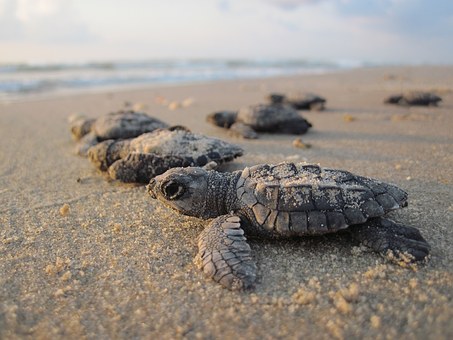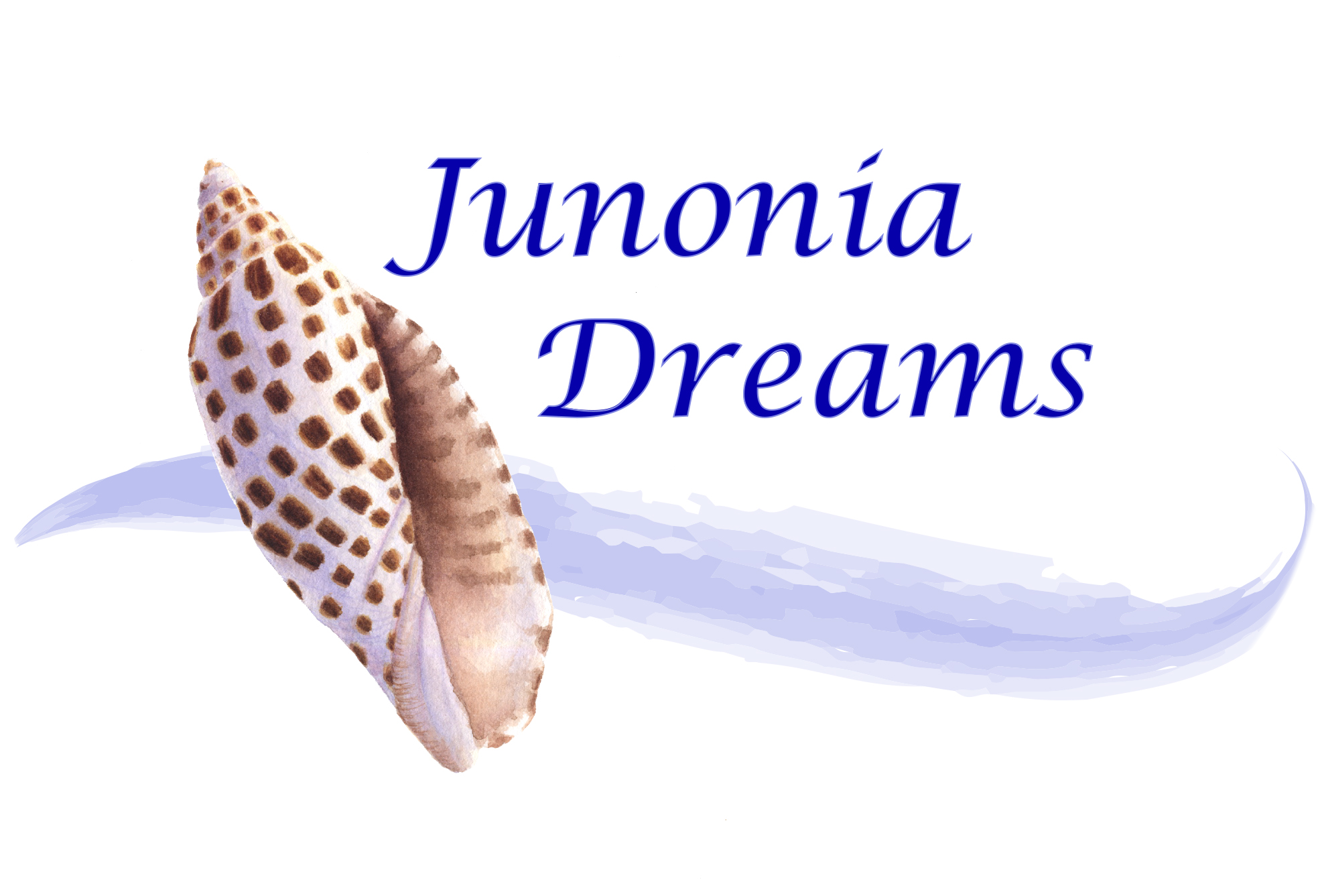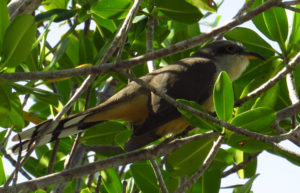
I’m very excited that our next trip to Sanibel Island will be at a different time of year than our annual vacation, which may afford us the opportunity to observe sea turtle nest sites, and possibly even hatchlings!
There are only seven known species of sea turtles in our world’s oceans: Green, Hawksbill, Kemp’s ridley, Leatherback, Loggerhead, Olive ridley, and Flatback. Only four species may be found nesting on Sanibel: Loggerhead, whose nests on the island far outnumber those of any of the other species; Green, although in second place, is also fairly prolific; occasionally, Leatherback; and rarely, Kemp’s ridley. You can bet I am studying each of the species’ mug shots and modus operandi between now and our arrival there.
Nesting season on the beaches of Sanibel begins in late April. The female adult sea turtles lay their eggs through August, and the eggs hatch from late June through October. The number of eggs in one nest varies, with an average of 110 eggs, and one female may have three to six nests in a single season. As soon as her eggs are deposited in the sand and covered, the female returns to the ocean, leaving the eggs to Mother Nature’s care.
Many factors can affect the success or failure of a nest. Predators may find the nest and eat the eggs, and severe storms may uncover the nests or inundate them. Even relatively minor variances in the temperature inside the nest affect how many males and how many females may hatch from the nest.
The eggs hatch in approximately 45-65 days, and the hatchlings immediately head for the ocean. Unfortunately, only about 1 in 1,000 hatchlings survive to adulthood. They are prey for other animals, intentionally hunted by people for their meat and shells, and accidentally caught by the fishing industry. They ingest some of the plastic littering the oceans, mistaking it for food. They become entangled in fishing line and other plastics.
Sea turtles generally hatch at night, and they use moonlight to help them orient themselves toward the ocean. Any artificial lighting may cause them to head in the wrong direction—often a fatal mistake. For this reason, regulations concerning lights at night are strictly enforced. Do not use flashlights or cell phone lights outside at night during nesting season. If you are on the beach at night (sometimes the best time for shelling), use a red light, or cover your headlamp/flashlight with a red cover. Do not disturb nesting turtles at any time of day or night by getting too close, shining lights on them, or taking flash photos. Turn off any outside lights at your condo or cottage and be sure to close the shades to keep the inside light from shining through.
Six of the seven sea turtle species are listed as threatened or endangered. The status of the seventh has yet to be determined, due to lack of data.
Fortunately, sea turtles and their nests are protected on Sanibel Island, both by laws, and by organizations whose members survey for nests, mark and install predator screens, and educate tourists on the turtles’ predicament. The Sanibel-Captiva Conservation Foundation performs these jobs locally. For more information about what we can all do to protect the sea turtles, especially during nesting season, go to www.sccf.org. There are also signs at the beaches to remind us.
*** To report any issues with nests, nesting turtles, or hatchlings, please call SCCF’s Sea Turtle Hotline: 978-728-3663. ***
Here’s a sampling of other, nationwide or international organizations that conduct research and actively work to protect sea turtles.
- Sea Turtle Conservancy, www.conserveturtle.org
- Turtle Foundation USA, www.turtle-foundation.org
- SEE Turtles, www.seeturtles.org
- Too Rare to Wear, www.tooraretowear.org
- World Wildlife Fund, www.worldwildlife.org

